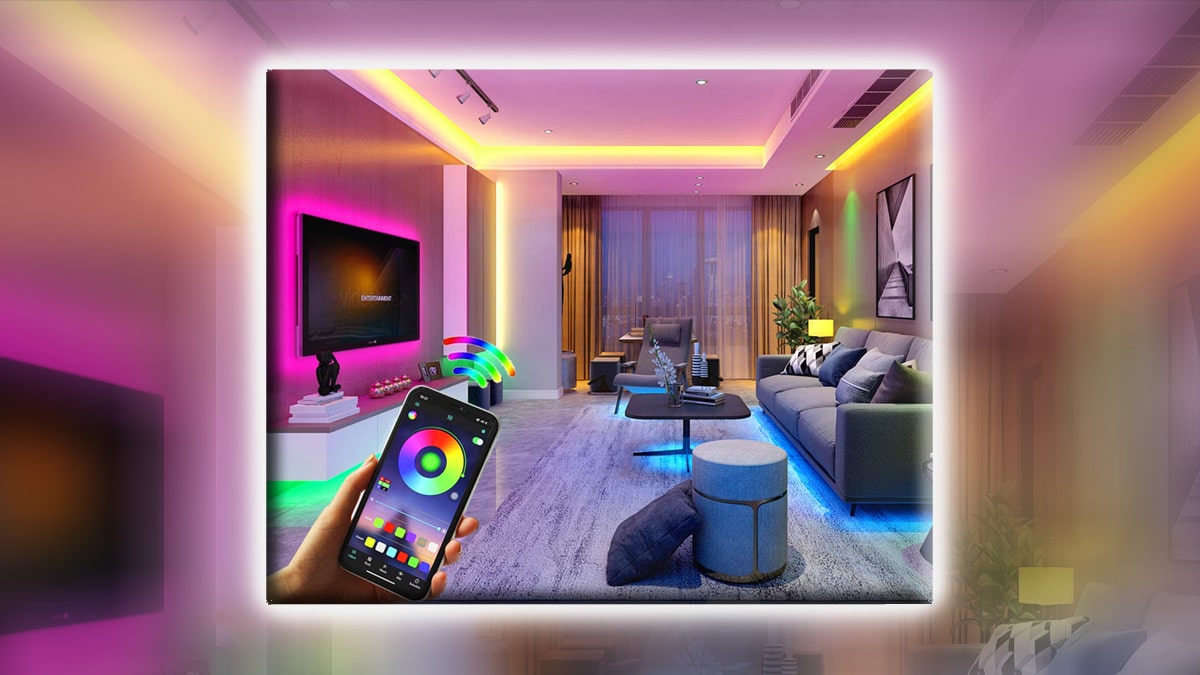Fueling Frictionless Retail With Near Store Solutions
Low-and-no contact retail exploded in response to the demands of COVID-19, yet these service delivery methods remain popular. Near-store, curbside solutions leverage modern, fast data networks to help to minimize that contact.
When Steve Jobs first announced the iPhone in 2007, few could have anticipated just how much smartphones and their adoption would transform what life today generally even looks like.
According to the Pew Research Center, 85% of Americans own a smartphone (up from 35% in 2011). These devices are increasingly integrated into every part of consumers’ lives.
Though apps have become so commonplace that they are practically synonymous with ‘software’ (a term which seems used less commonly today in public discourse than it once was), it is useful to remember how ‘apps’ mean to distinguish themselves from traditional software programs in the first place: fast, easy to use, simple to interface with, secure with sensitive data and respectful of privacy, and focused in their purpose and function.
These are the same qualities that consumers are now seeking in their retail experiences, and those expectations are increasing. In other words, widespread smartphone adoption and the entire design philosophy around apps can be seen as some of the primary drivers of the expectations of the ‘new consumer.’
After COVID-19 vaccinations allowed the world to ‘reopen,’ consumers who became so integrated with remote service systems now expect that integration to lead into their return to physical shopping mediums—forming a seamless digital-to-in-person retail experience.
“…the line between digital and physical retail has blurred,” writes Karen Bomber, Honeywell’s Director of Vertical Marketing and Safety & Productivity Solutions, for Forbes. “The result is a mélange of consumer expectations wherein shoppers demand both the convenience and transparency of eCommerce and the service and immediacy of physical retail.”
Near-store solutions—often powered by 5G technologies from providers such as T-Mobile—offer a way to facilitate that integration, bridging the traditional gap between online and offline commerce.
Why ‘Frictionless Retail’ and What are the Advantages?
‘Frictionless Retail’ refers to the increasingly relevant idea that retail shopping should minimize potential pain points as well as points of contact with staff as much as possible while allowing consumers to get connected with the products and services they want in a way that is more immediately accessible, smoother as it were.
Though these service delivery methods existed prior to the pandemic, COVID provided an obvious impetus for what was ultimately a hugely accelerated adoption: to mitigate the chances of infection.
Even today, however, contactless service delivery better accommodates those who are immunocompromised, disabled, or who otherwise simply prefer minimalized contact in public spaces.
Beyond that, however, is the manner in which frictionless retail can soothe what some studies find to be the biggest single source of poor customer satisfaction in retail: the checkout experience.
According to Kantar’s Analytics Practice, a more satisfying checkout experience was generally one with a shorter processing time overall.
Frictionless purchases and returns reduce the number of potential pain points by reducing the amount of overall contact the customer has with the often-varying conditions of a brick-and-mortar storefront.
Executed properly, the consumer ends up with a more consistent, convenient, and expedited purchasing experience that increases consumer satisfaction and thereby revenue, capturing distinctly post-COVID demographics in a way that will round out your brand’s reach and increase sales overall.
‘Near-Store’ as Friction-Reducer
‘Near-store’ doesn’t refer to forms of online/offline retail integrations such as BOPIS (buy online, pick up in-store) or its variation COPUS (customize online, pick up in store), methods that are—as the names imply—facilitated by the consumer after point of purchase via a quick step to (e.g.) a store’s customer service counter.
‘Near-store’ full-purchase solutions, rather, center around increasingly-popular curbside services and better facilitate those consumers looking for truly ‘contactless’ service, further reducing said ‘friction.’
Writes Bob Hoyler for the RetailDive, “[Walmart’s 2021] phasing out of the [automated, in-store pickup] towers…signaled the end of the BOPIS era [for Walmart]…consumers had increasingly made it clear they preferred a different click-and-collect service model: curbside pickup.”
“According to a Walmart spokesperson, “The customer told us they want one pick-up spot, and they want that pick-up spot to be outside.”’
There are potential pitfalls, however, including (as Hoyler continues) the critical need to ensure inventory is updated so that customers don’t find themselves ordering online and driving to the store for a product that isn’t there.
Meanwhile, retailers must also ensure that instructions for curbside services are as clear as possible, from directions provided after point of online sale to clear parking spaces delineated for pickup, and ensuring those pickup spots are in a visible, easy-to-reach part of your lot.
The unifying theme? Your curbside, frictionless retail practices need to actually be frictionless, to not generate additional, unnecessary frustration.
There are also some caveats to whether adoption of this model is right for one’s needs depending upon market demographics.
Curbside, near-store delivery service isn’t particularly useful or welcome for many outside North America (where vehicle ownership rates tend to be highest) or those living in dense urban areas where they get what they need on foot or by public transport.
Notes the American Marketing Association in a 2020 study, “Stand-alone and near-store yield the highest total retailer sales in these markets where larger households that shop more for perishables and buy more on impulse tend to live.”
Services Both In-and-Out Driving New Data Network-Powered Businesses
Some of the more innovative, 5G network-powered frictionless solutions to come out in the last many years can, however, attract those markets without reliable access to a vehicle (or store owners without the lot space to even place customers).
For in-store purchasing, new technologies enable (e.g.) “just walk out” shopping that is fully automated:
“The latest frictionless shopping solutions incorporate advanced vision-based sensors and artificial intelligence (AI) to provide the next generation of shopping experience that goes beyond self-scanning.”
Like in-store, near-store solutions can be integrated into broader IoT (Internet-of-Things) solutions to facilitate application spread, remote data collection, and data security. More specific applications, however, can include the use of beacons and geofencing.
Beacons refer to small wireless devices to beam out signals to smartphones, generally via Bluetooth and are often used to send out notifications to potential customers within a certain range.
It’s a technology that can be incorporated as part of a broader outreach strategy leveraging smartphone Bluetooth capabilities (even back in 2016, always-on smartphone Bluetooth adoption was on the rise and at a 40-50% rate).
Beacons can not only facilitate “meaningful location-based consumer experiences” but also serve as data-collectors, “[sending] personalized behavioral and demographic data to a business’s cloud computing system, offering insight into who customers are,” ultimately facilitating stronger omnichannel shopping experiences.
Geofencing, meanwhile, is a kind of location-based mobile marketing methodology wherein virtually defined ‘fences’ define a hyper-local marketing campaign’s reach.
A notable (and recent) adoption by The North Face saw the retailer hoping that “by getting customers to opt-in to its mobile database and sending them messages when they are in the vicinity of a physical retail outlet, the brand will be able to influence their purchase decision when they are able to act on it.”
Like some beacon applications, other potential benefits include better linkages between a business’s offline/online presence in addition to the collection of detailed, geospatially aware, real-time data for smart analytics teams to leverage.
Competing Tomorrow with Today’s Networks
In brief, what data-network leveraged technologies allow stores to do within an advertising/mobile notification context is increase their visibility with potential consumers in a geospatially-leverageable, personalized manner that helps in the generation of customer loyalty (coupon programs, so on), data collection, and ultimately better-informed consumers on your brand.
Writes Todd Sherman for Retail Dive, “This keeps retailers top-of-mind as shoppers decide where to shop.”
It is important to reiterate that a store’s needs should always be considered when looking at potential strategies, as no one type dominates.
For businesses with the capability for near-store, frictionless service deliveries operating in high-density, tech-rich, competitive retail environments, it is those that best leverage these technologies in combination with the fundamentals (stocking, customer service, product quality) who will best weather the shocks of a now-often tumultuous world economy.
T-Mobile has America’s largest, fastest, and most reliable 5G network, imagined for tomorrow but ready to give you an edge today. At T-Mobile for Business, we’re focused on providing retail businesses with the connectivity solutions and dedicated, exceptional service you need to keep you reliably connected in-store or on the move. Visit T-Mobile for Business – Retail to find out more about how we can take care of your business. Or to explore more about how 5G is transforming the world of Retail, check out the The Era of 5G in Retail.
Fastest: Based on median, overall combined 5G speeds according to analysis by Ookla® of Speedtest Intelligence® data 5G download speeds for Q4 2022. Most Reliable: According to independent third party umlaut from crowdsourced user experience data including task completion August 2022 to January 2023. See 5G device, coverage, & access details at T-Mobile.com.






